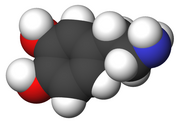Well , we are late into the night , the three of us (dont get it wrong) we were not in the sandwich kind of thing .
We are discussing Science , jobs and all those things that bothers young engineers just out of the college and thinking of what to do in our future ?
Just then the topic shihted to love , now what is this dream word love ?
A dream word nah , for many , or a paradox for some , lets keep it simple its simply INDESCRIBABLY NOT DEFINED. Well , my friends I was in love not too long ago , similarly I think for them .
May be we all are true or maybe we both are wrong .
So again , the question still remains unanswered what is this Love ??????????
No clues nah , well it surely makes me POETIC , I was great LYRICIST when I was in love
Similarly my friend was a great Singer , when in love(or what he thought), my other geeky was STUDIOUS when in love , and so so so so on goes the list.
Well surely love is wonder as it makes you do Something out of the hat , why ?
Just to keep that special going on for you as ever as you desire her so him would surely want you to have that extra X ?
And whats your ... think while I try to help you with science of Love .
Well the answer is DOPAMINE
Dopamine is a catecholamine neurotransmitter present in a wide variety of animals, including both vertebrates and invertebrates. In the brain, this substituted phenethylamine functions as a neurotransmitter, activating the five known types of dopamine receptors—D1, D2, D3, D4, and D5—and their variants. Dopamine is produced in several areas of the brain, including the substantia nigra and the ventral tegmental area.[1] Dopamine is also a neurohormone released by the hypothalamus. Its main function as a hormone is to inhibit the release of prolactin from the anterior lobe of the pituitary.
>> thanks to wikipedia
We are discussing Science , jobs and all those things that bothers young engineers just out of the college and thinking of what to do in our future ?
Just then the topic shihted to love , now what is this dream word love ?
A dream word nah , for many , or a paradox for some , lets keep it simple its simply INDESCRIBABLY NOT DEFINED. Well , my friends I was in love not too long ago , similarly I think for them .
May be we all are true or maybe we both are wrong .
So again , the question still remains unanswered what is this Love ??????????
No clues nah , well it surely makes me POETIC , I was great LYRICIST when I was in love
Similarly my friend was a great Singer , when in love(or what he thought), my other geeky was STUDIOUS when in love , and so so so so on goes the list.
Well surely love is wonder as it makes you do Something out of the hat , why ?
Just to keep that special going on for you as ever as you desire her so him would surely want you to have that extra X ?
And whats your ... think while I try to help you with science of Love .
Well the answer is DOPAMINE
Dopamine is a catecholamine neurotransmitter present in a wide variety of animals, including both vertebrates and invertebrates. In the brain, this substituted phenethylamine functions as a neurotransmitter, activating the five known types of dopamine receptors—D1, D2, D3, D4, and D5—and their variants. Dopamine is produced in several areas of the brain, including the substantia nigra and the ventral tegmental area.[1] Dopamine is also a neurohormone released by the hypothalamus. Its main function as a hormone is to inhibit the release of prolactin from the anterior lobe of the pituitary.
| Dopamine | |
|---|---|
 | |
 | |
| Identifiers | |
| CAS number | 51-61-6 |
| PubChem | 681 |
| ChemSpider | 661 |
| UNII | VTD58H1Z2X |
| KEGG | D07870 |
| ChEMBL | CHEMBL59 |
| Jmol-3D images | Image 1 |
| Properties | |
| Molecular formula | C8H11NO2 |
| Molar mass | 153.18 g/mol |
| Density | 1.26 g/cm3 |
| Melting point | 128 °C, 401 K, 262 °F |
| Boiling point | decomposes |
| Solubility in water | 60.0 g/100 ml |
| Hazards | |
| R-phrases | R36/37/38 |
| S-phrases | S26 S36 |
>> thanks to wikipedia

No comments:
Post a Comment